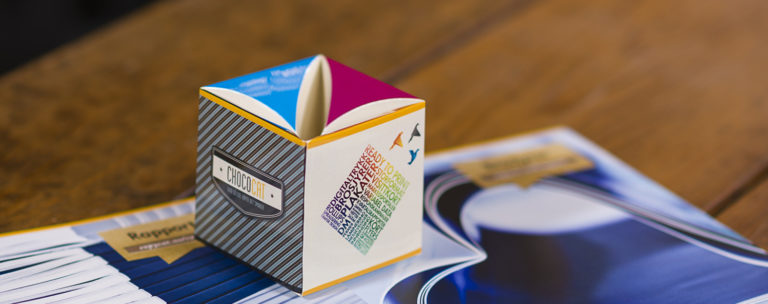Written by Brendan Casey,
Vice President, Engineering Services and Customization, Xerox Corporation
Imagine you need to print something, and your target substrate is unable to accept print. A workaround might be to print on a different substrate and affix it to the target. The downside to that workaround? Greater costs and additional process steps.

Yet, that’s exactly how printing is handled in most flexible packaging applications. For example, adhesive labels or cardboard inserts are used with plastic clam shells, which provide a durable, low-cost way to brand packaging for electronic items such as batteries and foods like cookies, fruits and prepared meals.
But that may be changing. Emerging capabilities to print directly onto thin plastic films using digital inkjet technology are improving flexible packagers’ productivity, lowering their costs, and enabling short runs and personalization that meet changing market needs. And for brand owners, this means product packaging can exude a clean look and professional feel that had previously been difficult to replicate.
In other words, the technology has the potential to disrupt the flexible packaging market in much the way digital printing has transformed commercial printing over the last two-plus decades.
A Changing Market Ripe with Opportunity
Today, most adhesive labels and cardboard inserts for plastic packaging are printed on flexographic presses in long, static runs that make analog processes most economical.
But the market is changing. Many consumer brands offer a range of product variants to meet specialized needs. A recent visit to the Colgate toothpaste Web site revealed 48 Colgate-branded toothpaste offerings. Such increased product segmentation results in lower volume production of many variants, making short-run, digital package printing a compelling option. It also delivers cost savings through reductions in inventory and the flexibility to respond more easily to content changes and consumer needs.
Despite a market penetration of less than 1 percent today, Smithers Pira projects the market for digital printing of flexible packaging will evolve rapidly with 32 percent compound annual growth from 2015 to 2019.
https://youtu.be/oxKiraJ61hs?list=PLioPSVdbzdpZHN7MyCsEnX76Y18cS-34X
Under-the-Hood Glimpse of Technologies at Play
Xerox is entering the market with our new Xerox® Production Press for Plastic Films & Substrates, a solution that enables production for a wide range of applications, including clamshell containers, blister packs, lids, plant stakes, shrink wrap, plastic bags, and gift, credit and reward cards.
The press is the result of many years of research exploring plastic film printing possibilities—and utilizing hardened innovations. This includes its base engine, the Xerox CiPress Production Inkjet Press, which features a robust paper handling system that was readily adaptable to meet the demands of printing on thin plastic films. By building off the CiPress engine, the new press can handle rolled plastic sheets ranging from as thick as 20 thousandths of an inch (about two-thirds the thickness of a typical credit card), to as thin as about 30 microns (roughly the thickness of Saran Wrap).
The toughest technology challenge? Matching inks with plastic substrates and the formulae for their pre-printing treatments. Liquid inks respond in one of two ways when put on plastic: they either bead up or they flow. Printing requires a balancing act to achieve adhesion without the flow. In addition, the inks need to achieve high image quality and durability, as well as light fastness for outdoor applications, and the capability to stretch without cracking or flaking for thermo forming applications.
The good news: our team has formulated ink and pre-treatments with virtually any type of ink—UV, aqueous, solvent or solid, from rigid to very stretchable. Collectively, these deliver the range of properties needed to meet a varied and robust set of applications.
https://youtu.be/I6_SUdjet8w?list=PLioPSVdbzdpZHN7MyCsEnX76Y18cS-34X
Not all Surfaces are Created Equally
We also can use a wide range of plastic substrates, including low-cost substrates that challenge other plastic-film printing devices. While on the surface plastic film may look flat, it generally has waves and troughs in the spans between rollers while under tension —tall enough to bump into conventional print heads that need to work close to the printing surface. One way around that is to use more expensive plastics that are optimized for flatness.
Instead, we’ve incorporated a closed-loop tension control system, native to the CiPress engine, which not only flattens out thick plastic films but also can adjust jetting to account for the stretching that occurs with thin films. This allows for accurate printing on thicknesses ranging from 33um to 500ums – at rated speeds of 100 feet per minute – while also empowering the operator to choose more cost-effective grades of film.
Customized to Meet your Specific Needs
Our Production Press for Plastic Films & Substrates is a customizable system built by working with our Engineering Services team to fit your exact needs and application requirements.
To help illustrate this concept in motion, we’ve done something crazy. We’ve taken this platform and traded in its plastic web substrate for a napkin material. Yes, you read that correctly: we’re able to produce stunning quality at up to 500 feet/minute on fragile napkin rolls, as delicate as two-ply, without the material tearing or breaking. By leveraging the advantages of waterless ink from the CiPress platform, ink can sit beautifully atop the napkin without bleeding into its second layer. Think about that for a moment.
If you would like to contact an engineer to discuss your ideal package printing system, from plastic film printing to yes, napkin printing, please contact us at USA.Xerox.Engineering.Services@Xerox.com.




Comments are closed.